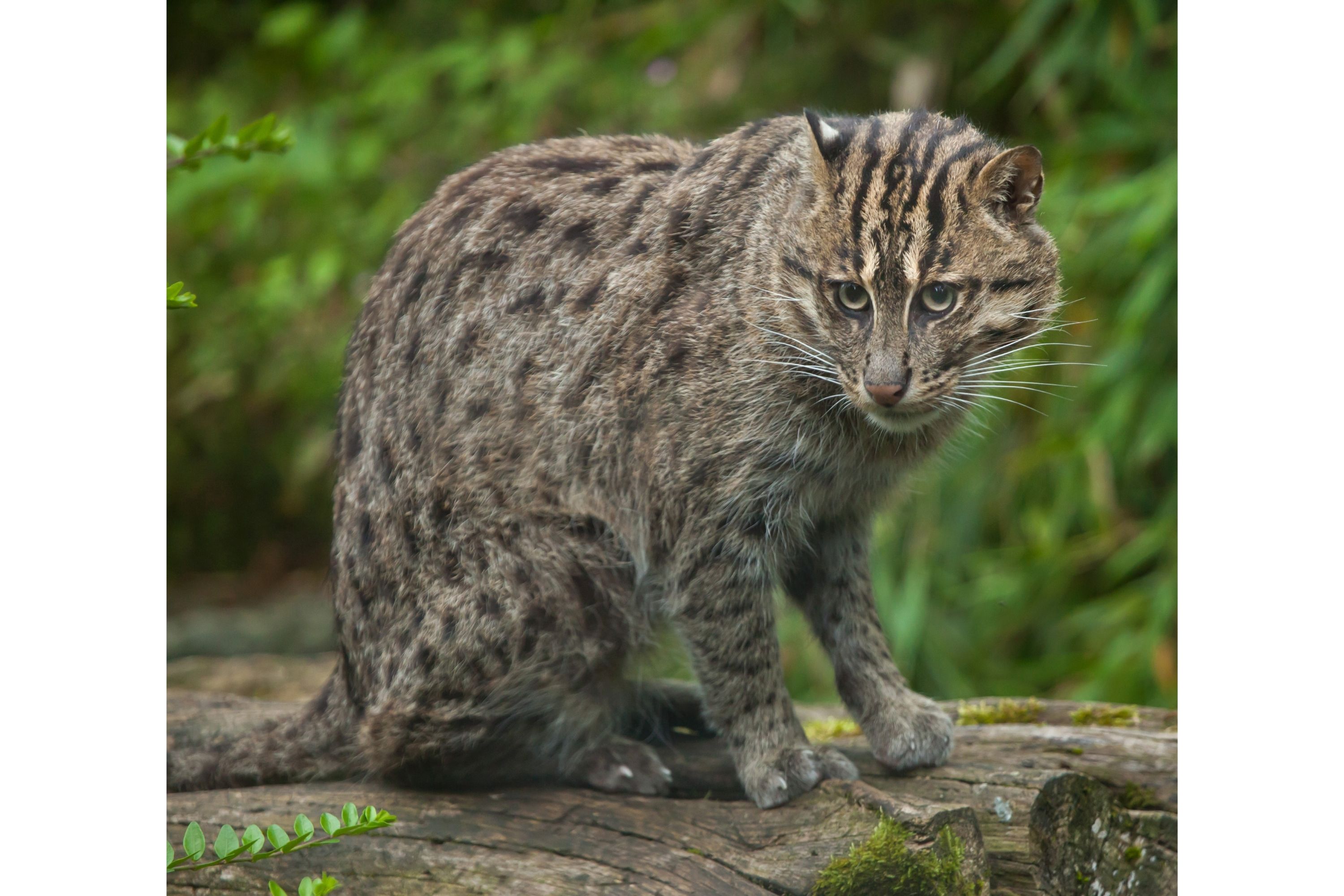Fishing cat
(Prionailurus viverrinus)

Description
The fishing cat (Prionailurus viverrinus) is a medium-sized wild cat of South and Southeast Asia. Since 2016, it is listed as Vulnerable on the IUCN Red List. Fishing cat populations are threatened by destruction of wetlands and have declined severely over the last decade. The fishing cat lives foremost in the vicinity of wetlands, along rivers, streams, oxbow lakes, in swamps, and mangroves. The fishing cat is the state animal of West Bengal. The fishing cat is broadly but discontinuously distributed in South and Southeast Asia. It is strongly associated with wetlands, inhabiting swamps and marshy areas around oxbow lakes, reed beds, tidal creeks and mangrove forests; it seems less abundant around smaller, fast-moving watercourses. Most records are from lowland areas. In Pakistan's Sindh Province, the fishing cat was recorded in the Chotiari Dam area in 2012. In the Nepal Terai, it has been recorded in Shuklaphanta, Bardia, Chitwan and Parsa National Parks and in Koshi Tappu Wildlife Reserve. Felis viverrinus was proposed by Edward Turner Bennett in 1833 who described a fishing cat skin from India. Prionailurus was proposed by Nikolai Severtzov in 1858 as generic name for spotted wild cats native to Asia. Felis viverrinus rhizophoreus was proposed by Henri Jacob Victor Sody in 1936 who described a specimen from the north coast of West Java that had a slightly shorter skull than fishing cat specimens from Thailand. Phylogenetic analysis of the nuclear DNA in tissue samples from all Felidae species revealed that the evolutionary radiation of the Felidae began in Asia in the Miocene around 14.45 to 8.38 million years ago. Analysis of mitochondrial DNA of all Felidae species indicates a radiation at around 16.76 to 6.46 million years ago. The Prionailurus species are estimated to have had a common ancestor between 8.16 to 4.53 million years ago, and 8.76 to 0.73 million years ago. Both models agree in the rusty-spotted cat (P. rubiginosus) having been the first cat of the Prionailurus lineage that genetically diverged, followed by the flat-headed cat (P. planiceps) and then the fishing cat. It is estimated to have diverged together with the leopard cat (P. bengalensis) between 4.31 to 1.74 million years ago and 4.25 to 0.02 million years ago. The fishing cat is thought to be primarily nocturnal, and is very much at home near water. It can swim long distances, even under water.
Taxonomic tree:







